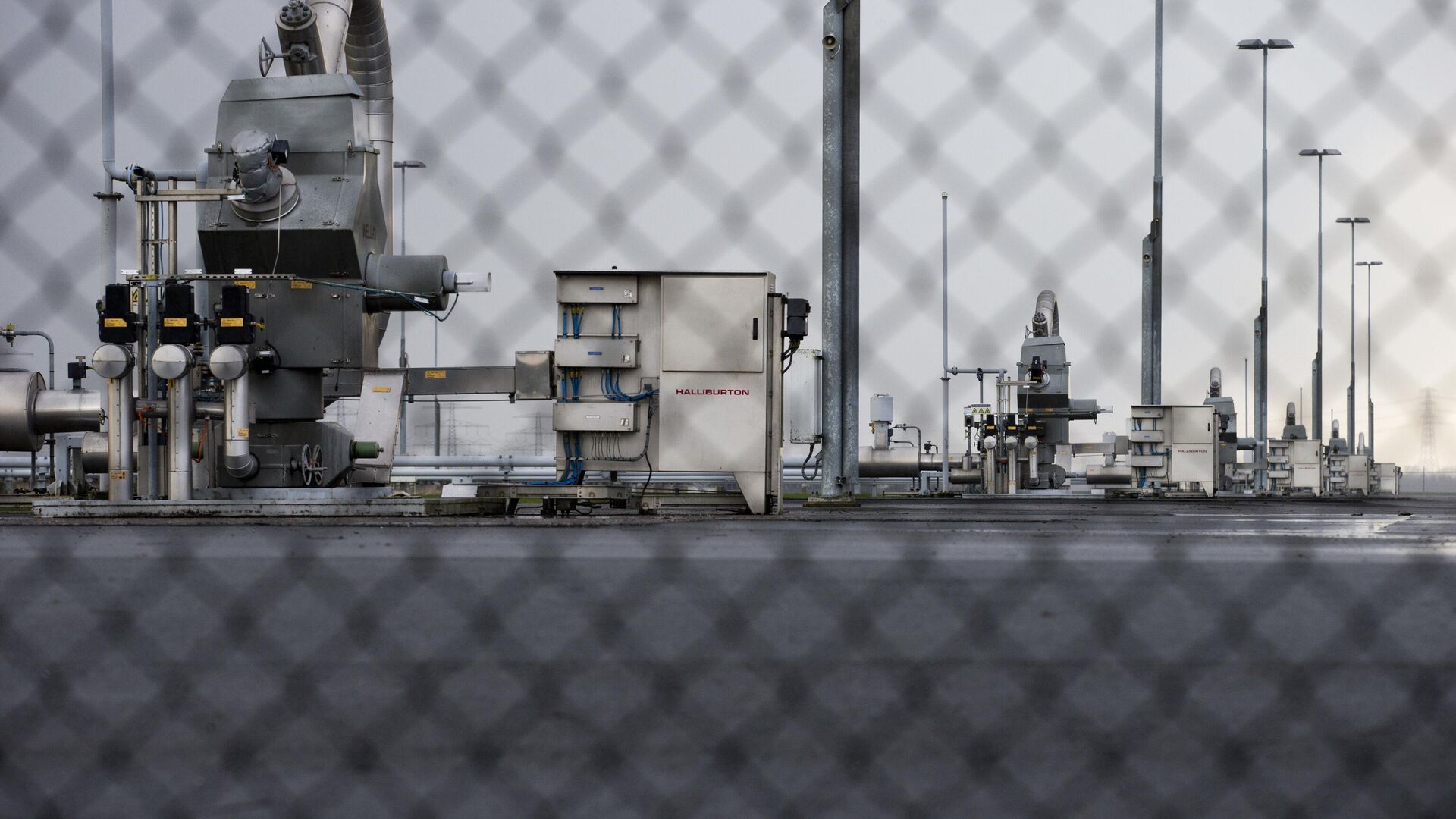https://sputnikglobe.com/20231002/netherlands-stopped-gas-production-at-europes-largest-field-in-groningen---report-1113847441.html
Netherlands Stops Gas Production at Europe's Largest Field in Groningen - Report
Netherlands Stops Gas Production at Europe's Largest Field in Groningen - Report
Sputnik International
The decision to stop gas production was made due to the risk of earthquakes. However, the media reported in June that gas wells may be opened next year in case of a very cold winter.
2023-10-02T01:49+0000
2023-10-02T01:49+0000
2023-10-02T04:13+0000
world
netherlands
gas
gas production
energy
https://cdn1.img.sputnikglobe.com/img/07e7/0a/02/1113847284_0:160:3072:1888_1920x0_80_0_0_46203f2dd9de7a442c98305b2159f11a.jpg
The decision to stop gas production was made due to the risk of earthquakes. However, the media reported in June that gas wells may be opened next year in case of a very cold winter. At least 11 production locations will close, according to one report. “The problems of Groningen residents have not yet been resolved and unfortunately the earthquakes will continue for years to come, but the source of all misery will be closed from October," Vijlbrief added. The field makes up just a small portion of Europe's gas production, however, its cease in production could cause more issues for Europe which has already experienced an energy crisis after cutting ties with Russian suppliers, leading to a sharp rise in gas prices for the bloc. The Groningen gas field, located in the northern Netherlands, was discovered in 1959, while its development began in 1963. The field's initial recoverable gas reserves were 2.9 trillion cubic meters. For many years, the field was the main source of gas supply to Northwestern Europe, but due to numerous earthquakes in the province in the 1990s, the Dutch government decided to gradually limit production from it.
netherlands
Sputnik International
feedback@sputniknews.com
+74956456601
MIA „Rossiya Segodnya“
2023
Sputnik International
feedback@sputniknews.com
+74956456601
MIA „Rossiya Segodnya“
News
en_EN
Sputnik International
feedback@sputniknews.com
+74956456601
MIA „Rossiya Segodnya“
Sputnik International
feedback@sputniknews.com
+74956456601
MIA „Rossiya Segodnya“
netherlands, gas production, groningen gas field, earthquakes
netherlands, gas production, groningen gas field, earthquakes
Netherlands Stops Gas Production at Europe's Largest Field in Groningen - Report
01:49 GMT 02.10.2023 (Updated: 04:13 GMT 02.10.2023) THE HAGUE (Sputnik) - The Netherlands stopped gas production at Europe's largest gas field located in the Dutch province of Groningen on October 1, 60 years after the start of development of the field, a national broadcasting company reported.
The decision to stop gas production was made due to the risk of earthquakes. However, the media reported in June that gas wells may be opened next year in case of a very cold winter.
At least 11 production locations will close, according to one
report.
“Gas extraction in Groningen will stop. An important moment after decades of gas extraction and especially the consequences of that gas extraction for Groningen residents," said Hans Vijlbrief, Netherlands State Secretary for the Extractive Industries.
“The problems of Groningen residents have not yet been resolved and unfortunately the earthquakes will continue for years to come, but the source of all misery will be closed from October," Vijlbrief added.
The field makes up just a small portion of Europe's gas production, however, its cease in production could cause more issues for Europe which has already experienced an energy crisis after cutting ties with Russian suppliers, leading to a sharp rise in gas prices for the bloc.
The Groningen gas field, located in the northern Netherlands, was discovered in 1959, while its development began in 1963. The field's initial recoverable gas reserves were 2.9 trillion cubic meters.
For many years, the field was the main source of gas supply to Northwestern Europe, but due to numerous earthquakes in the province in the 1990s, the Dutch government decided to gradually limit production from it.


